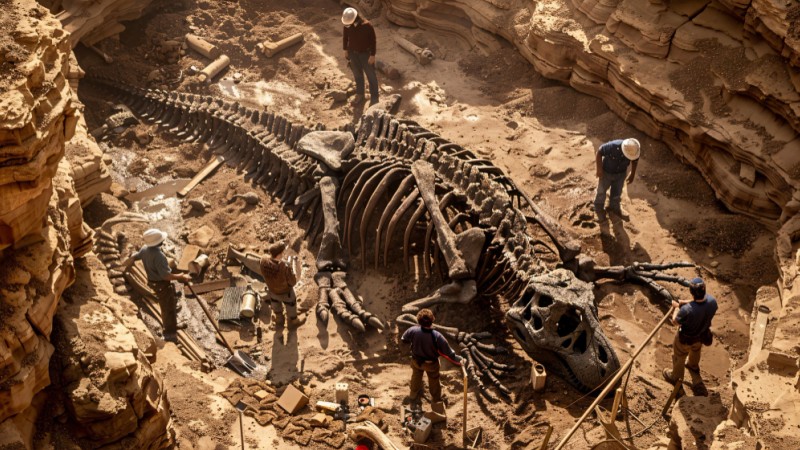How Fractalism Reconciles Myth and Fossils

For centuries, myths and fossils have occupied two very different worlds: one poetic, the other scientific. Myths speak in symbols, metaphors, and memory. Fossils speak in sediment, shape, and age. But what if both are fragments of a single, repeating pattern—a fractal truth echoing across time?
Fractalism proposes that the universe is built upon self-similar patterns that recur across scales, from galaxies to DNA to story. If nature follows fractal rules, then so does memory. And if memory can be preserved in myth, then myth itself might contain distorted reflections of biological and historical truths.
Take the case of the Cynocephali—dog-headed humanoids described across cultures. Mainstream anthropology dismisses them as symbolic or mistaken identities. But under fractalism, these persistent motifs across civilizations are not coincidences. They may be echoes of a species—or a pattern—that once existed.
Fractalism sees the fossil record not as a complete history, but as a sampled snapshot of a continuous process. It does not demand that species neatly fit into linear timelines. Just as patterns in nature branch, loop, and repeat, so too might evolution. A species thought extinct—like the coelacanth—may resurface, reshaping scientific understanding.
Consider the timeline paradox:
Some creatures, known as "living fossils," defy extinction expectations. The coelacanth, believed extinct for over 65 million years, was discovered alive in 1938. The horseshoe crab has remained virtually unchanged for over 450 million years. The tuatara, a reptile native to New Zealand, resembles species that coexisted with dinosaurs yet lives on today.
These examples remind us that absence in the fossil record does not prove extinction—it may only reflect the limits of discovery. A fossil is proof of existence, not expiration.
Where science sees gaps, fractalism sees space for recursion. Where myth seems irrational, fractalism asks: what pattern is being remembered?
When a myth aligns with a fossil—when description mirrors morphology—fractalism suggests this is no coincidence. It is convergence. It is memory folding onto reality.
In this view, fossils are the bones of the past.
Myths are the soul.
And fractalism is the bridge that unites them.


Leave a comment